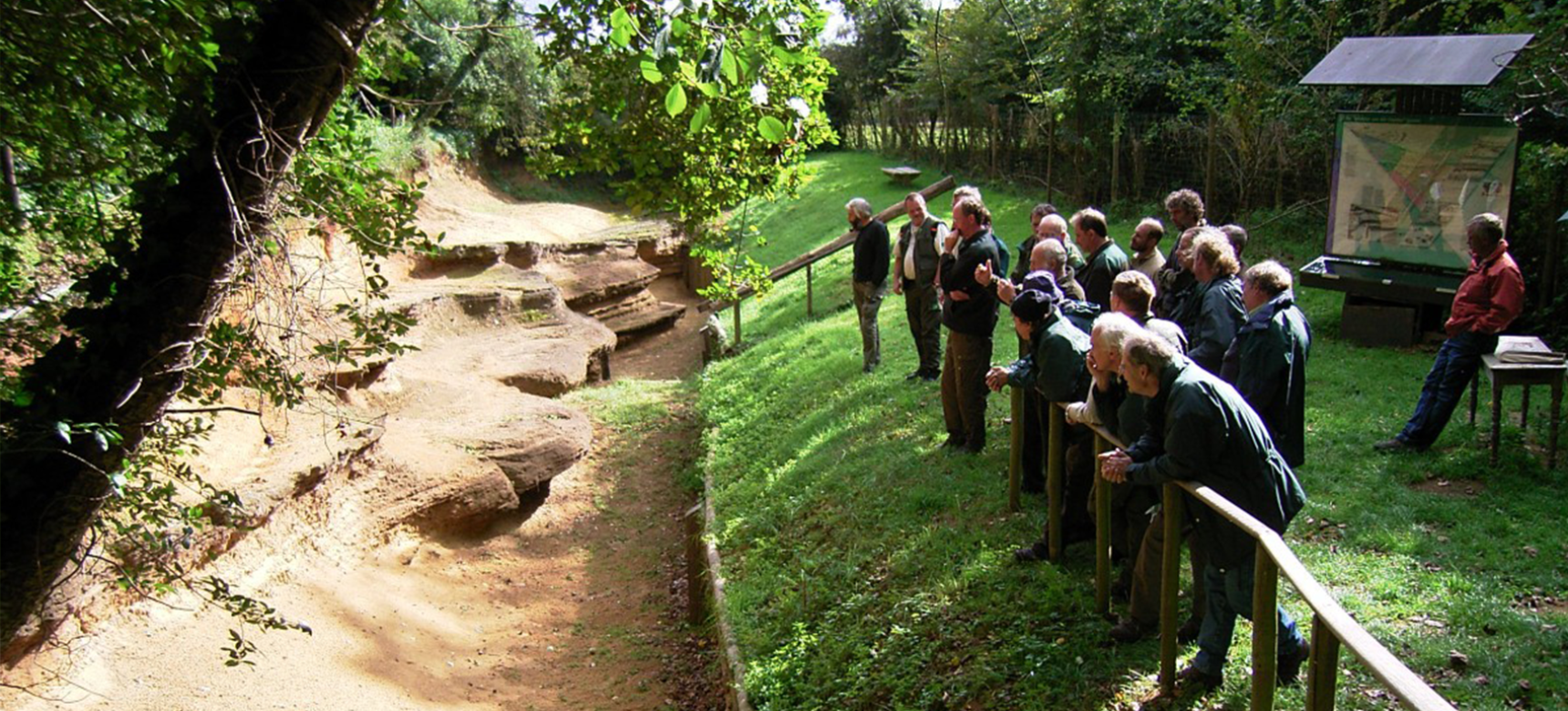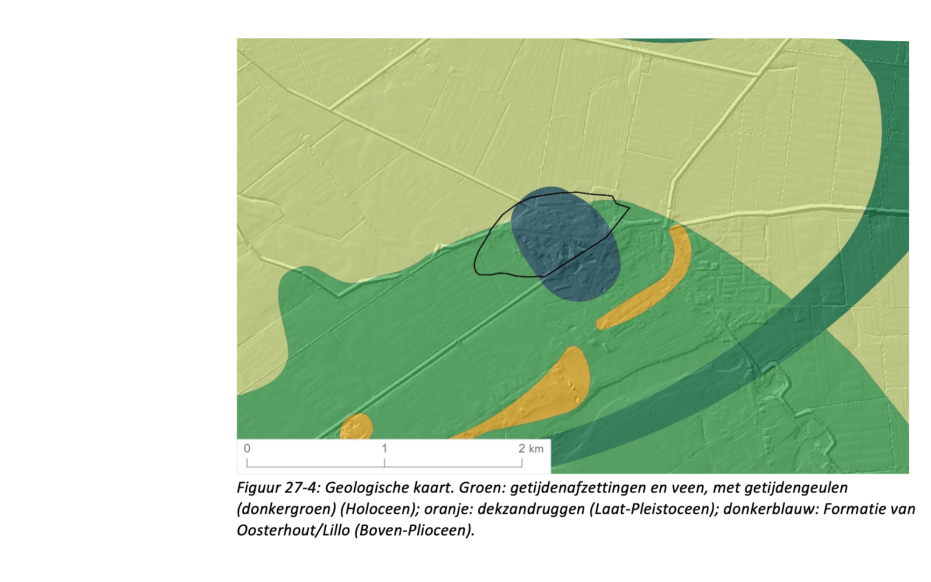Origin of the landscape
The 'Meester Van der Heijden quarry' is located approximately at the highest point of Nieuw-Namen. The main deposits visible in the quarry are shell-bearing sands named in the Netherlands as Formation of Oosterhout (Pliocene) and in Belgium as Formation of Lillo. Striking features in the quarry are the rust-brown sands at the top and the yellow layered sands at the bottom, containing a number of hard ironstone beds protruding from the wall. The two sand layers are separated by a thick layer of shell fragments glued together by lime (shell breccia). There is thus a clear dichotomy: at the bottom sand deposited during the warm Pliocene, above it cover sand blown across the landscape by wind during the Ice Age. Between the two is a large time gap of about three million years.

